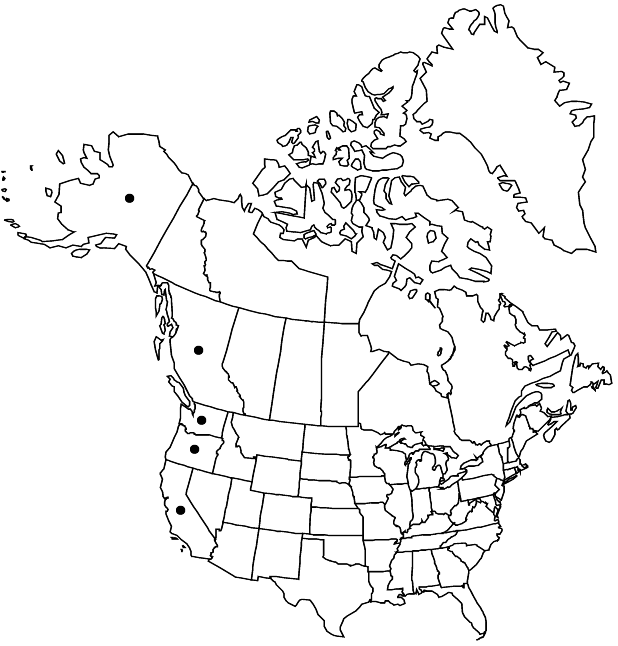Vaccinium parvifolium
in A. Rees, Cycl. 36: Vaccinium no. 3. 1817 ,.
Plants crown-forming, sometimes suckering when injured, 10–70 dm, not rhizomatous; twigs of current season green, sharply angled, glabrous or minutely puberulent in lines; (short lateral branches on both orthotropic and plagiotropic shoots often divaricate to 75° giving shrub a distinct fasciculate aspect). Leaf blades dark green, ovate to oblong-elliptic, 13–25 × 8–14 mm, margins entire, surfaces puberulent or glabrous abaxially, glabrous adaxially. Flowers: calyx pale green, lobes spreading, distinct, broadly ovate, 0.4–0.6 mm, glabrous; corolla pink, bronze, or yellowish green, globose to urceolate, 4–6 × 3–5 mm, thin, glaucous; filaments glabrous. Berries red, sometimes faintly glaucous, translucent, 7–10 mm diam. Seeds ca. 1 mm. 2n = 24.
Phenology: Flowering spring–summer.
Habitat: Coniferous woods, often on stumps and logs, disturbed areas
Elevation: 0-1100 m
Distribution

B.C., Alaska, Calif., Oreg., Wash.
Discussion
The red, waxy fruits of Vaccinium parvifolium were popular with all coastal Indian tribes and remain so with recreational pickers. The berries are somewhat sour but make excellent pastries and preserves. Commercial use of V. parvifolium is limited; vigorous growth, ease of harvest, and site adaptability provide opportunities.
Selected References
None.